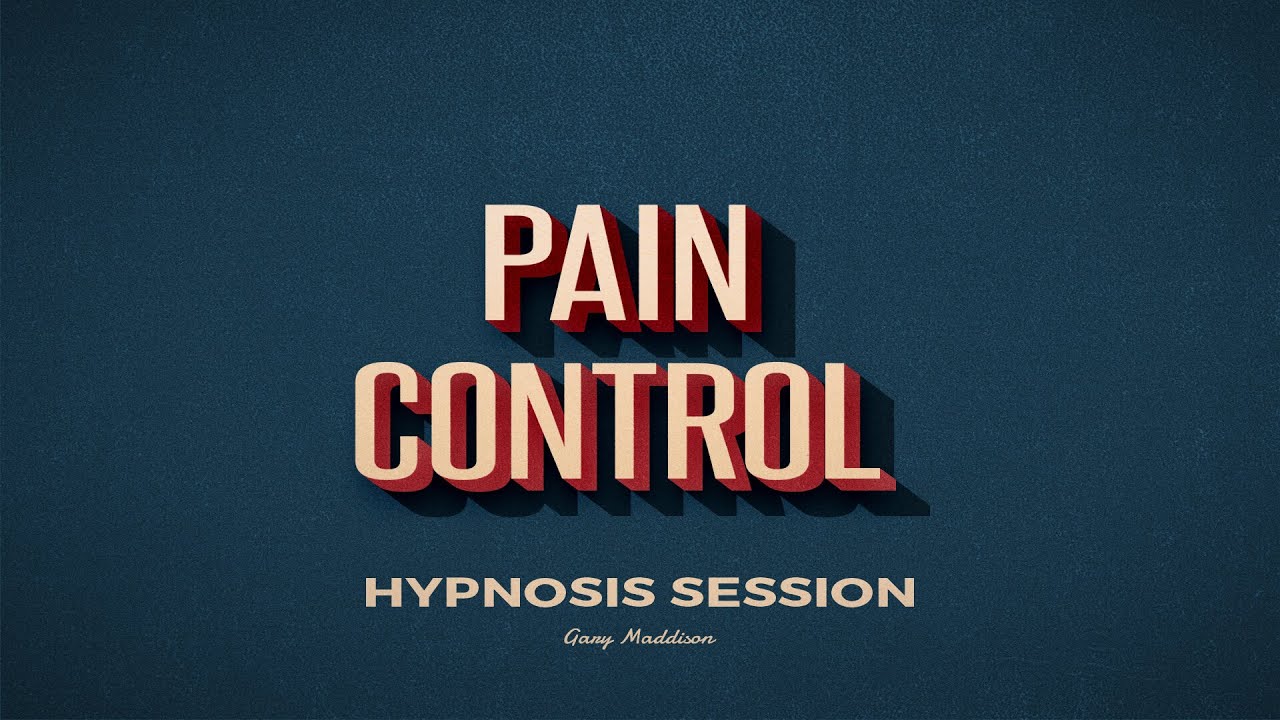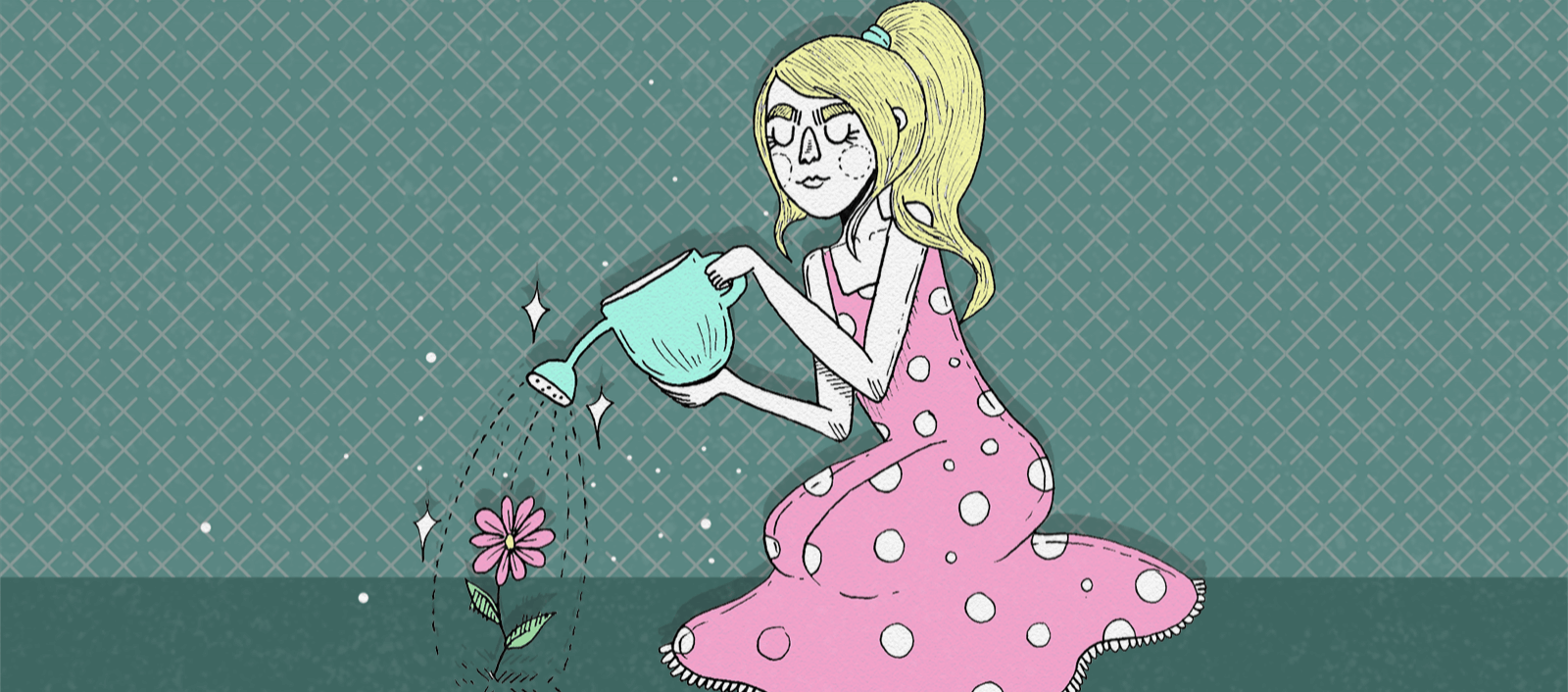
You may have heard about the benefits of guided imagery for chronic pain. The guided imagery technique trains the mind how to create an image that depicts the painful situation. This image is then transformed into a more positive and less stressful image. By doing this, the patient can better cope with the challenges of life and improve her mental, emotional and physical state. These tips will help make the most of meditation. These tips can help you to practice guided imagery for pain.
You must first create a calm and peaceful scene in your imagination. To do this, visualize a relaxing forest or a sunny shore. A wise 'guide' can be pictured to answer your questions. This 'guide' will be your subconscious mind. Imagine a relaxing scene. Now think about how it would feel to be there. When you become accustomed to this technique, you will not find it difficult to continue using it.

Guided imagery is an extremely portable practice that relies upon your imagination and concentration. In order to make guided imagery work, it is important that you use it in a private space where you aren't disturbed by other people. Choose a quiet place to avoid interruptions. To be able to focus completely on your images, it is best to use an audio record. You can do the exercise as many times as necessary after you've finished it. The best thing about guided imagery? It can be done anywhere. You don’t have to be in a particular room to practice guided imagery.
With the use of guided imagery, you can build new constructs in your imagery. You can create a goal for your life, a dream or a skill. It can also help with physical ailments such as fibromyalgia. You can also use guided imaging to improve public speaking skills. This technique can help you be more confident with your speech. You can start practicing guided imagery by using your imagination.
Guided imagery is a powerful tool in managing stress and anxiety. You don't need to be a doctor to use guided imagery to manage pain. It is easier to use than yoga or exercise and can be used by anyone, regardless of their background. You can use the recordings to learn how you can use guided imagery for pain relief. You can also attempt the therapy. You can either practice it at your home or with your friends.

Guided imagery has many benefits. It can help relax your mind as well as your body. You can also use it to access your inner wisdom. Guidance imagery can be used for pain relief if the techniques are learned well. It should be easy to learn and practice, as well as to use to reduce stress. Guided imagery can help you sleep better if you have difficulty sleeping. Once you are able to master it, you can begin to apply it to other areas of your daily life.
FAQ
What is the difference between sugar and fat?
Fat is an energy source that comes from food. Sugar is naturally found in fruits and veggies. Both sugars and fats have the same calories. Fats have twice the calories of sugars, however.
Fats are stored within the body and can contribute to obesity. They cause cholesterol buildup in arteries which may lead to heart attacks and strokes.
Sugars are quickly absorbed and provide instant energy. This causes blood glucose to rise. High blood glucose levels can be dangerous because it increases the risk of developing type II diabetes.
Is cold a sign of a weak immune response?
Cold makes you weaker because you have less white blood cells to fight infection. Cold can also make you feel better as your body releases endorphins to your brain, which reduce pain.
Why does weight change as we age?
How can you find out if your weight has changed?
Weight loss happens when there is less muscle mass and more fat. This means that calories must be consumed at a rate greater than energy. Low activity levels are the most common cause for weight loss. Other reasons include poor eating habits, stress, hormone imbalances, certain medications and illness. If there is more body fat than muscle mass, then weight gain can occur. It occurs when people eat more calories than what they use in a given day. The most common causes are overeating, increased activity, hormonal changes, and excessive calories.
The main reason why our bodies lose weight is because we consume fewer calories than we burn. Regular exercise increases metabolism, which means that we burn more calories per day. This doesn't necessarily mean we will lose weight. What matters is whether we are losing fat or building muscle. We will lose weight if we burn more calories than we consume. But if we're consuming more calories than we're burning, then we're actually storing them as fat.
As we age, our ability to move around is slower and we are less mobile. We also tend to consume less food than when we were younger. As a result, we gain weight. On the flipside, we are more muscular than we really need and appear bigger.
It's not possible to measure how much weight your body has lost without weighing yourself every week. There are many ways you can measure your weight. You can measure your waist, hips and thighs as well as your arms. Some prefer to use the bathroom scales, others prefer to use tape measures.
For a better track of your progress, try to weigh yourself once per week and measure your waistline once every month. You can also take photos of your self every few months to track how far you've come.
Online, you can find out your height and weight. If you are 5'10" tall, and you weigh 180 lbs, then you would probably weigh 180 lbs.
How do I count calories?
Perhaps you are wondering what the best diet is for you. or "is counting calories necessary?" The answer to this question depends on many factors, including your current health, your personal goals and preferences, as well as your overall lifestyle.
The Best Diet For Me - Which One Is Right For You?
My current health, my personal goals and lifestyle will determine the best diet for me. There are many diets available, some good and others not so good. Some are better for certain people than others. What should I do then? How can I make the right choice?
This article aims at answering these questions. It starts with a brief introduction of the different types of diets available today. Then, the pros and cons of each type of diet are discussed. Finally, we'll look into how to choose the best one for you.
To begin, let's take a quick look at the different types of diets.
Diet Types
There are three main types of diets: low fat, high protein, and ketogenic. Let's talk about them briefly.
Low Fat Diets
A low-fat diet reduces the amount of fats you eat. This is done through reducing the intake of saturated fats (butter, cream cheese, etc.) These fats can be replaced with unsaturated fats like avocados and olive oil. If you want to lose weight fast and easily, then a low fat diet is often recommended. This diet can cause problems such constipation as heartburn, indigestion, and even stomach pain. A person may also experience vitamin deficiencies if they don't get enough vitamins.
High Protein Diets
High protein diets discourage carbohydrates and encourage the use of proteins. These diets are more protein-rich than others. These diets are designed to build muscle mass and help you burn more calories. They may not be able to provide sufficient nutrition for people who need it. They may also be too restrictive and not suitable for everyone.
Ketogenic Diets
Ketogenic diets are also known as keto diets. They are high in fat and moderate in protein and carbs. These are often used by bodybuilders and athletes because they allow them the ability to train harder and for longer periods of time without feeling tired. You must adhere to all side effects, including fatigue, headaches, nausea and headaches.
What should I eat?
Eat lots of fruits and vegetables. These fruits and vegetables are high in vitamins, minerals, which can help you keep your immune systems strong. They are also rich in fiber, which is good for digestion and makes fruits and vegetables filling. Try to include at least five servings of fruit and veg per day.
Drink plenty of water. Water flushes toxins from the body and gives you a full feeling between meals. Drink about eight glasses each day.
Choose whole grains over refined grains. Whole grains retain all nutrients including B vitamins, iron and zinc as well as calcium, magnesium, calcium, protein, and magnesium. Refined grain has lost some of its nutrition.
Avoid sugary drinks. Sugary drinks are full of empty calories and lead to obesity. Choose water, milk or unsweetened tea instead.
Avoid fast food. Fast food is low in nutritional value. Although it may taste delicious, fast food won't provide you with the energy you need for your daily activities. Avoid soups, sandwiches and other unhealthy options.
Limit alcohol intake. Alcohol is a poor nutrient and has empty calories. Limit yourself to no more than two alcoholic beverages a week.
Red meats should be avoided. Red meats are high-in saturated fat and cholesterol. Choose lean cuts such as beef, pork and lamb, chicken, fish, or turkey.
Statistics
- nutrients.[17]X Research sourceWhole grains to try include: 100% whole wheat pasta and bread, brown rice, whole grain oats, farro, millet, quinoa, and barley. (wikihow.com)
- Extra virgin olive oil may benefit heart health, as people who consume it have a lower risk for dying from heart attacks and strokes according to some evidence (57Trusted Source (healthline.com)
- WHO recommends consuming less than 5% of total energy intake for additional health benefits. (who.int)
- In both adults and children, the intake of free sugars should be reduced to less than 10% of total energy intake. (who.int)
External Links
How To
How to Keep Your Body Healthy
This project had the main purpose of providing suggestions for how to maintain your health. It is important to know what you should do in order to maintain your health. In order to achieve this we had to find out what exactly is good for our bodies. We then looked at different ways in which people try to improve their health and we found out that there were many things that could help us. Finally, we came up with some tips that would help us stay healthier and happier.
We began by looking at what food we eat. We found that some foods are harmful and others are good for us. We know sugar is bad for you because it causes weight gain. However, vegetables and fruits are good for us as they have vitamins and minerals that our bodies need.
Next, exercise was discussed. Exercise helps our bodies get stronger and gives them energy. It makes us feel happy. There are many types of exercise that we can do. You can do many things like running, swimming, dancing and lifting weights. Another way to increase our strength is through yoga. Yoga can be a great exercise as it increases flexibility, improves breathing and is an excellent way to increase strength. If we want to lose weight, we should avoid eating too much junk food and drink plenty of water.
Finally, let's talk about sleeping. Sleep is one the most important things we do each day. When we don't get enough sleep, we tend to become tired and stressed. This can lead to issues such as back pain, depression and heart disease. We must get enough sleep if we are to remain healthy.